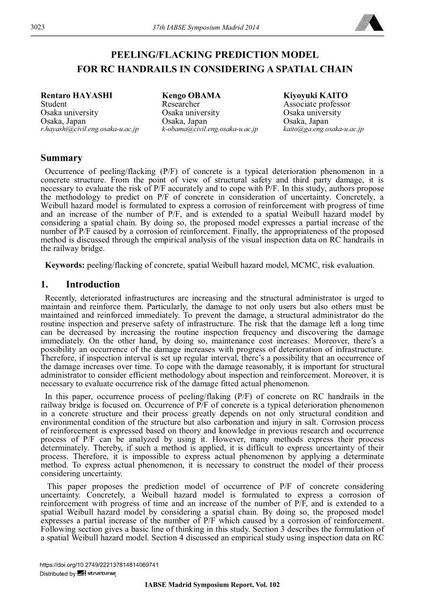Peeling/Flacking Prediction Model

|
|
|||||||||||
Détails bibliographiques
| Auteur(s): |
Rentaro Hayashi
Kengo Obama Kiyoyuki Kaito |
||||
|---|---|---|---|---|---|
| Médium: | papier de conférence | ||||
| Langue(s): | anglais | ||||
| Conférence: | IABSE Symposium: Engineering for Progress, Nature and People, Madrid, Spain, 3-5 September 2014 | ||||
| Publié dans: | IABSE Symposium Madrid 2014 | ||||
|
|||||
| Page(s): | 3023-3030 | ||||
| Nombre total de pages (du PDF): | 8 | ||||
| Année: | 2014 | ||||
| DOI: | 10.2749/222137814814069741 | ||||
| Abstrait: |
Occurrence of peeling/flacking (P/F) of concrete is a typical deterioration phenomenon in a concrete structure. From the point of view of structural safety and third party damage, it is necessary to evaluate the risk of P/F accurately and to cope with P/F. In this study, authors propose the methodology to predict on P/F of concrete in consideration of uncertainty. Concretely, a Weibull hazard model is formulated to express a corrosion of reinforcement with progress of time and an increase of the number of P/F, and is extended to a spatial Weibull hazard model by considering a spatial chain. By doing so, the proposed model expresses a partial increase of the number of P/F caused by a corrosion of reinforcement. Finally, the appropriateness of the proposed method is discussed through the empirical analysis of the visual inspection data on RC handrails in the railway bridge. |
||||
